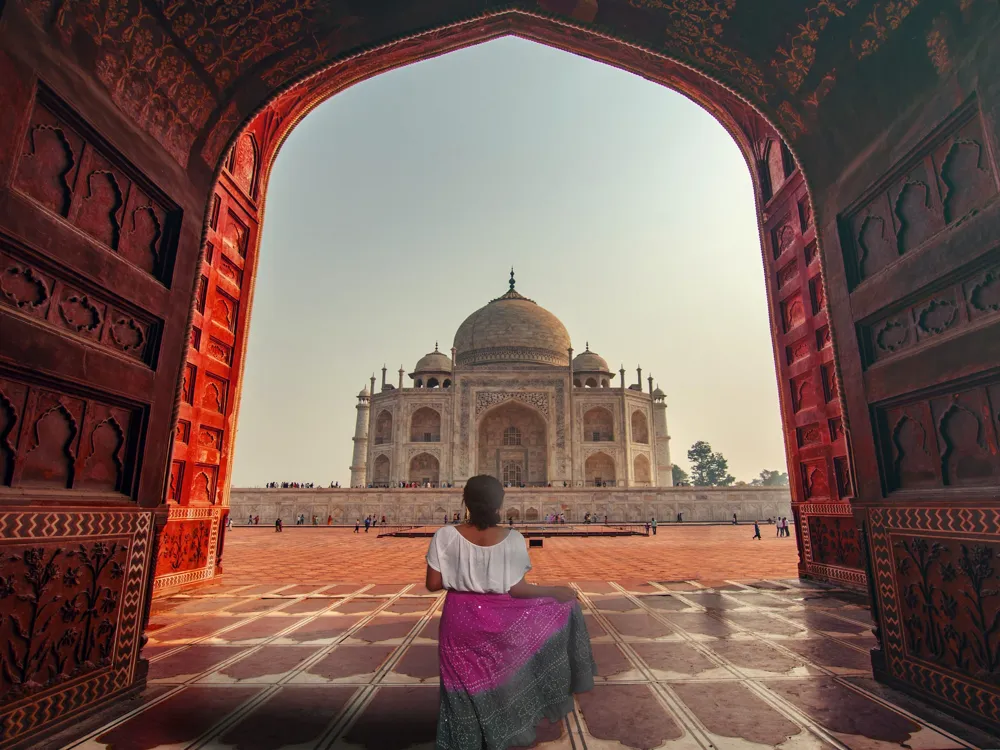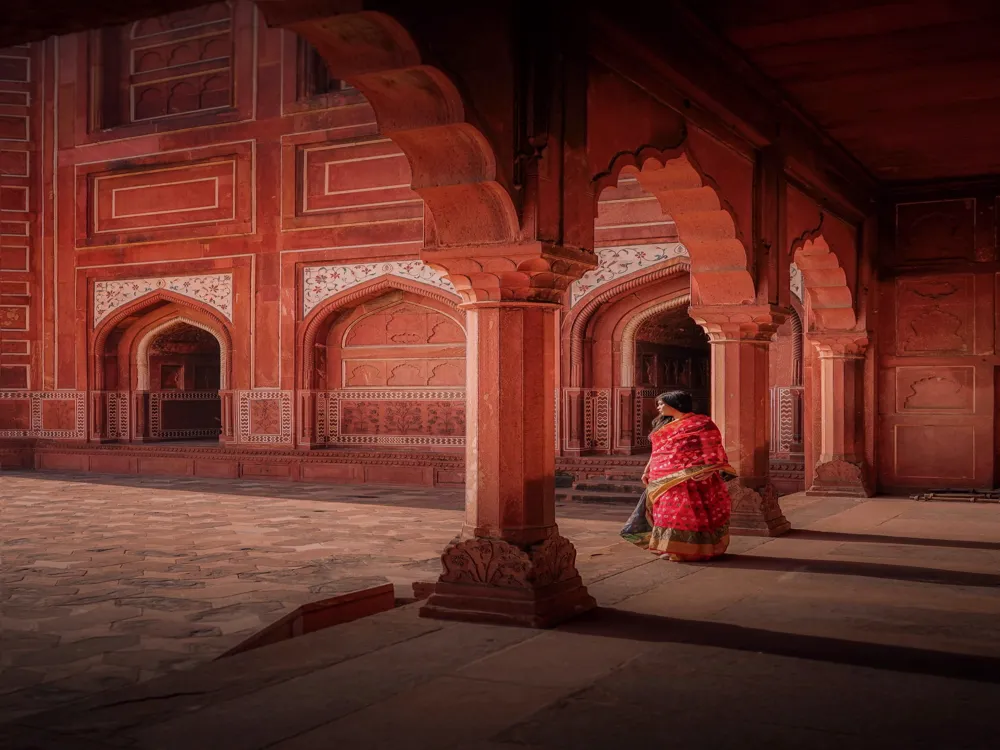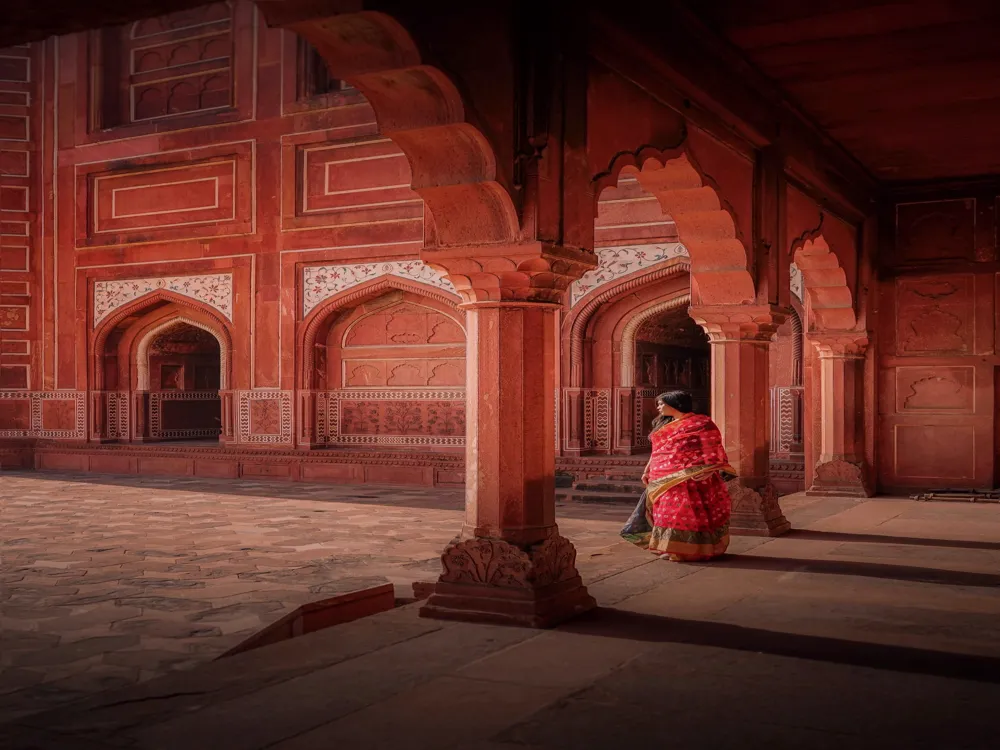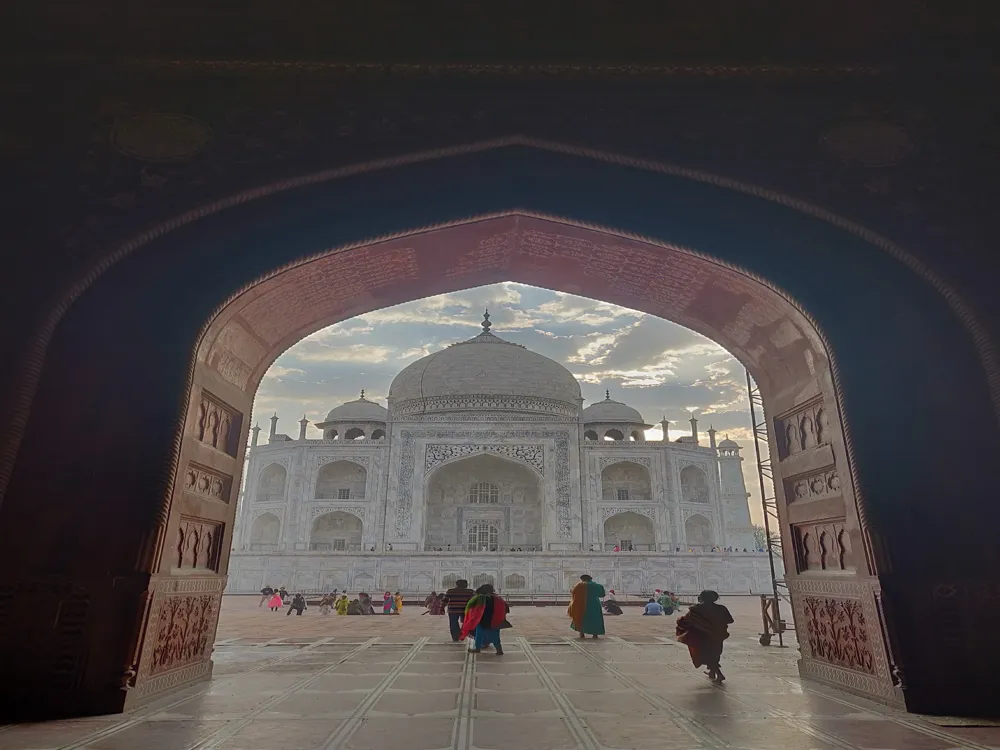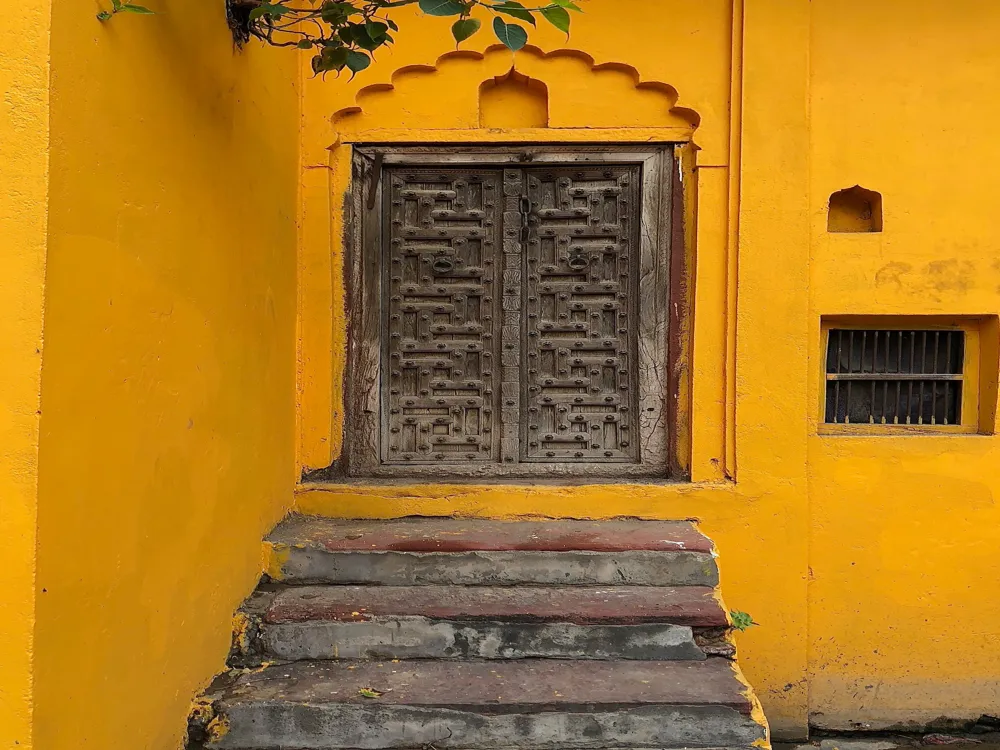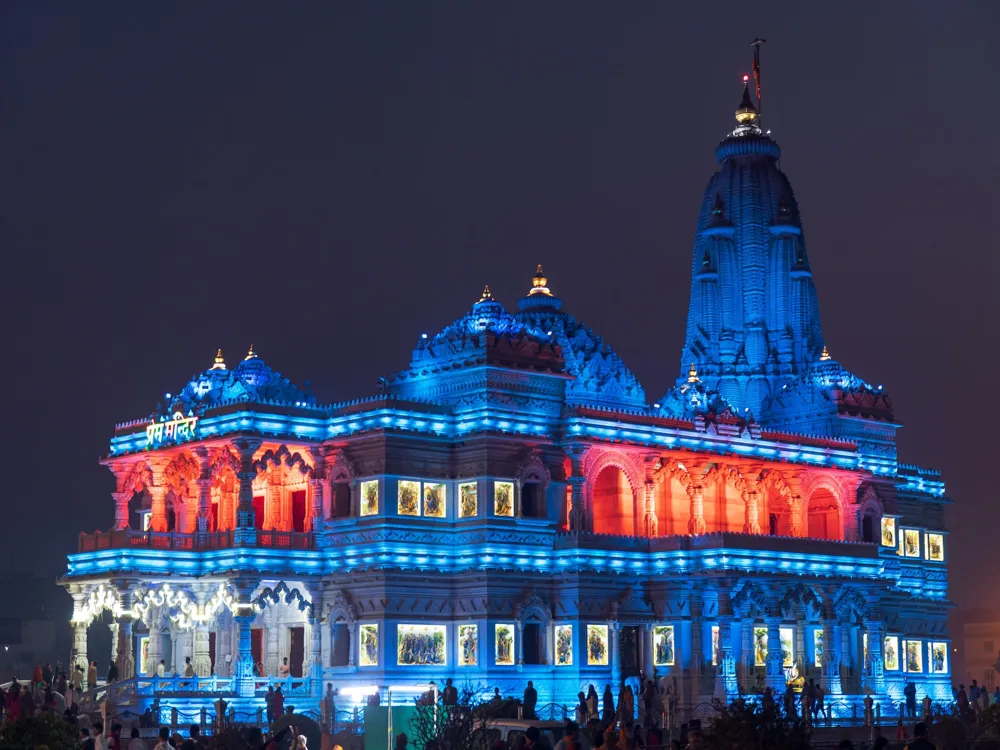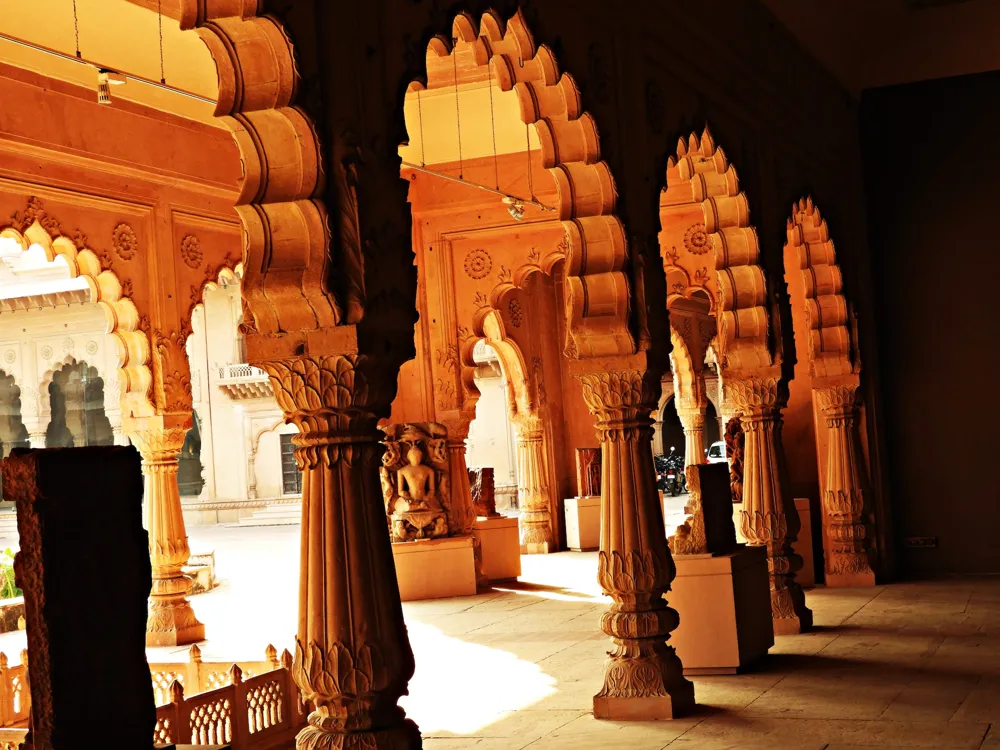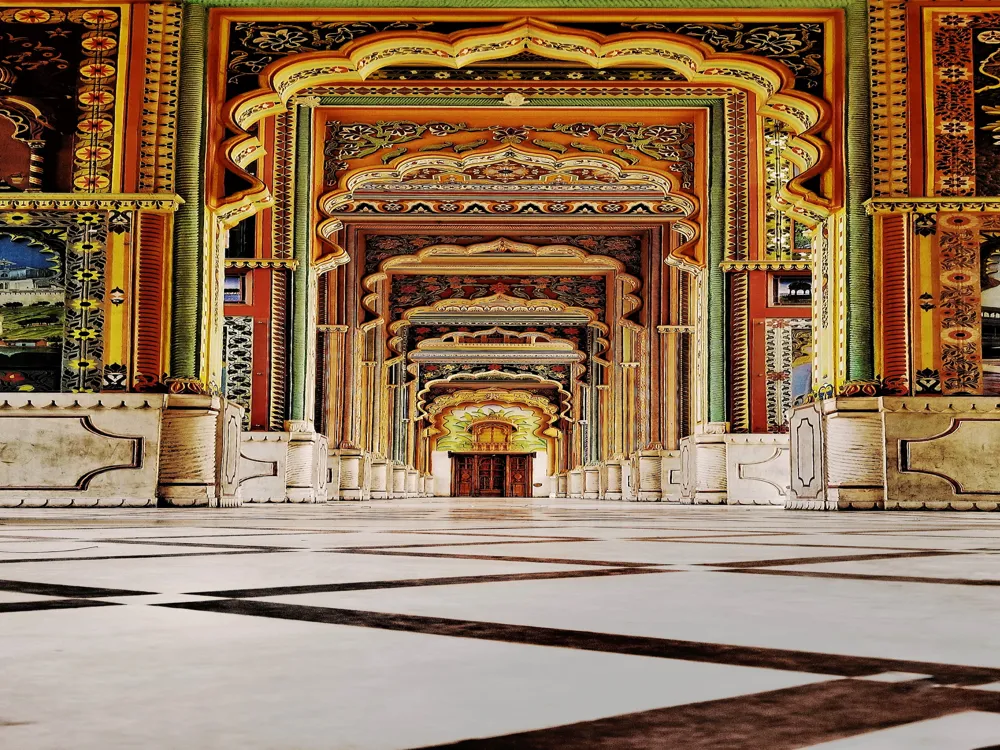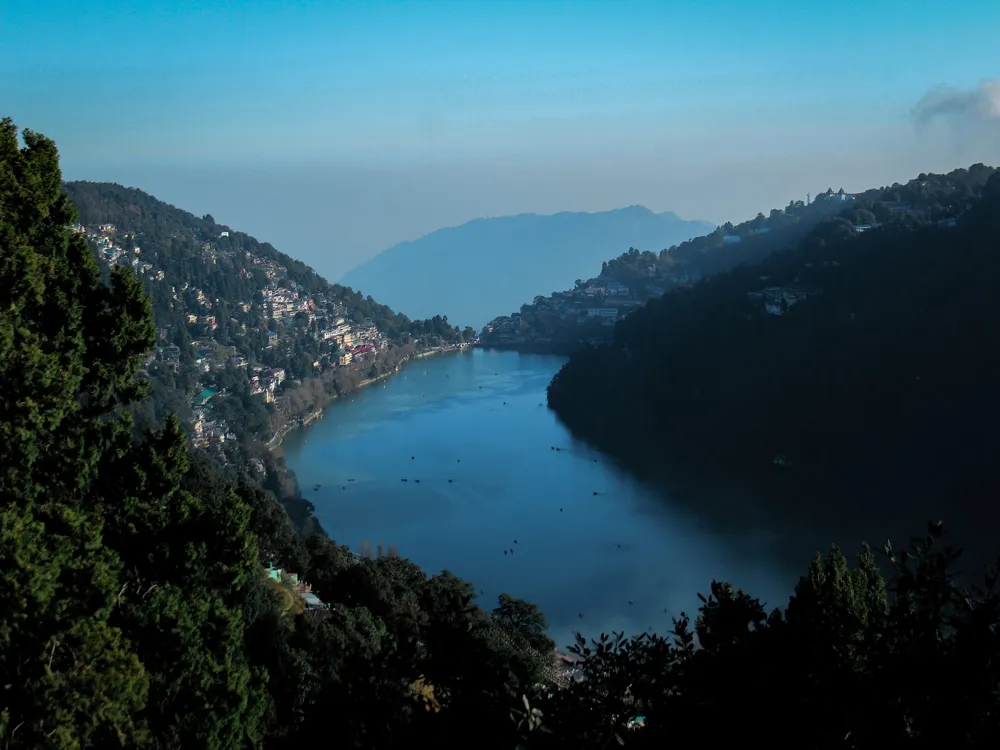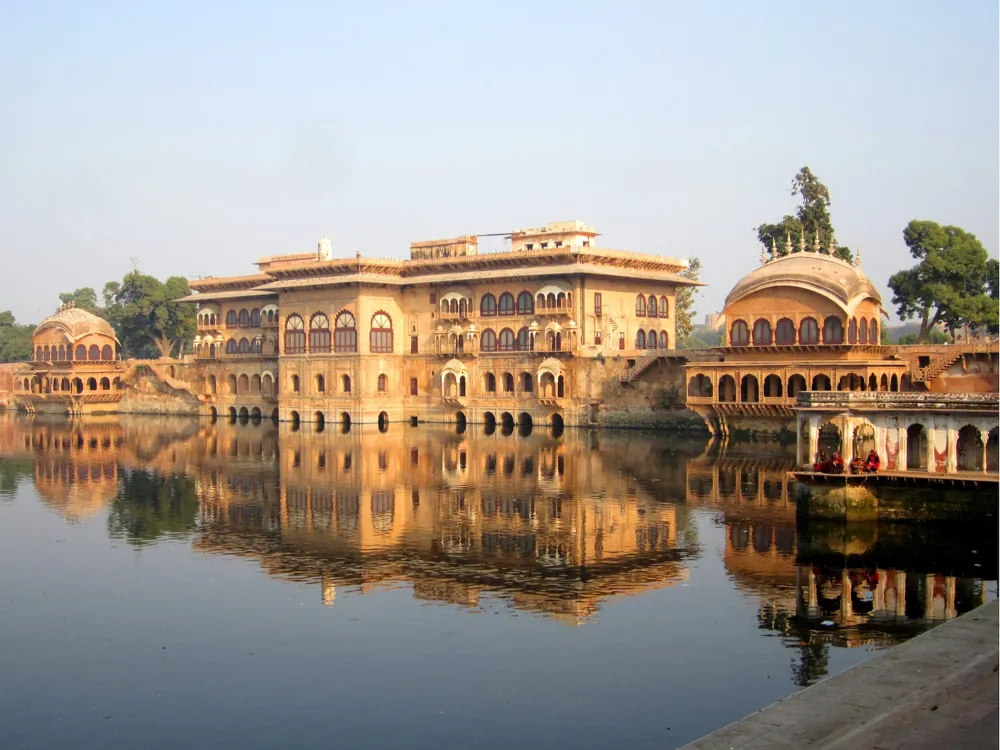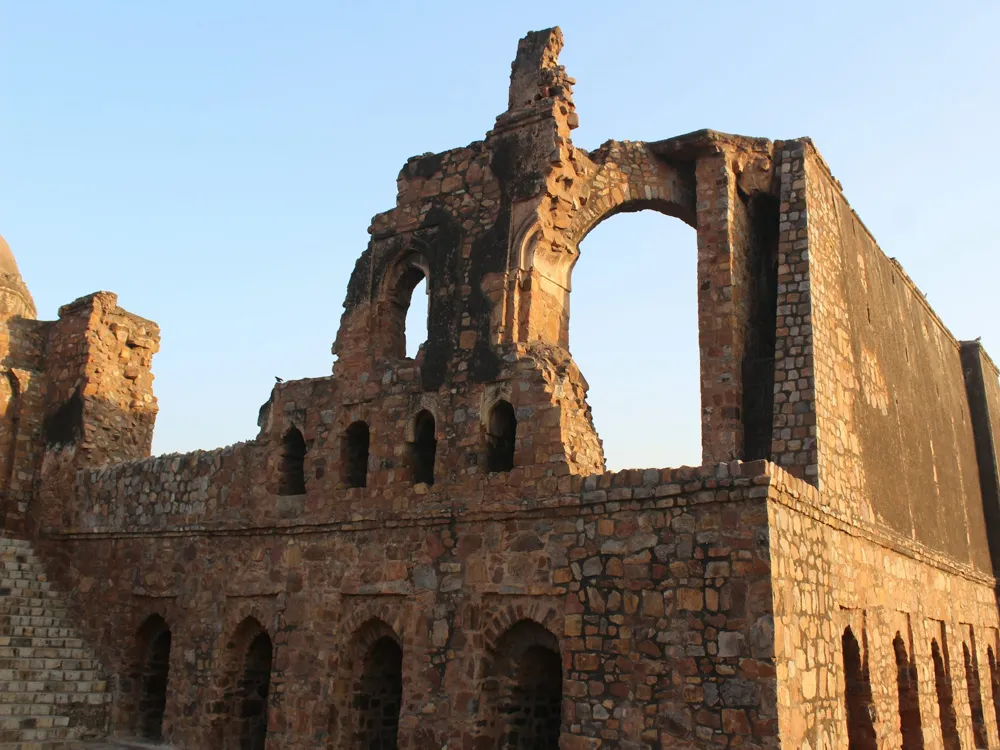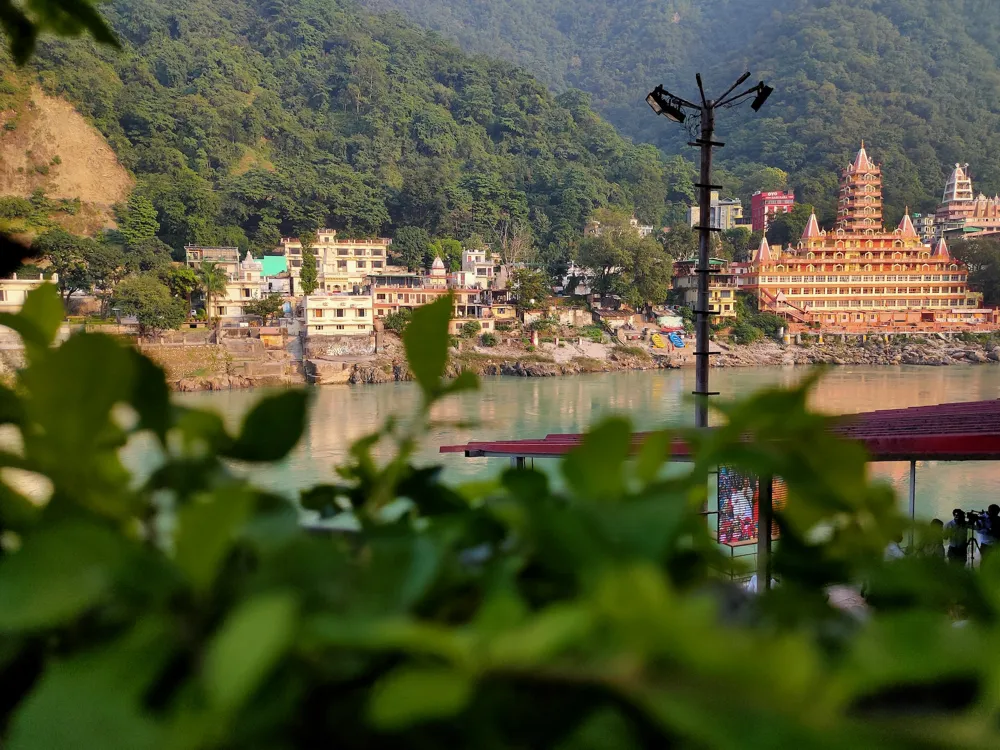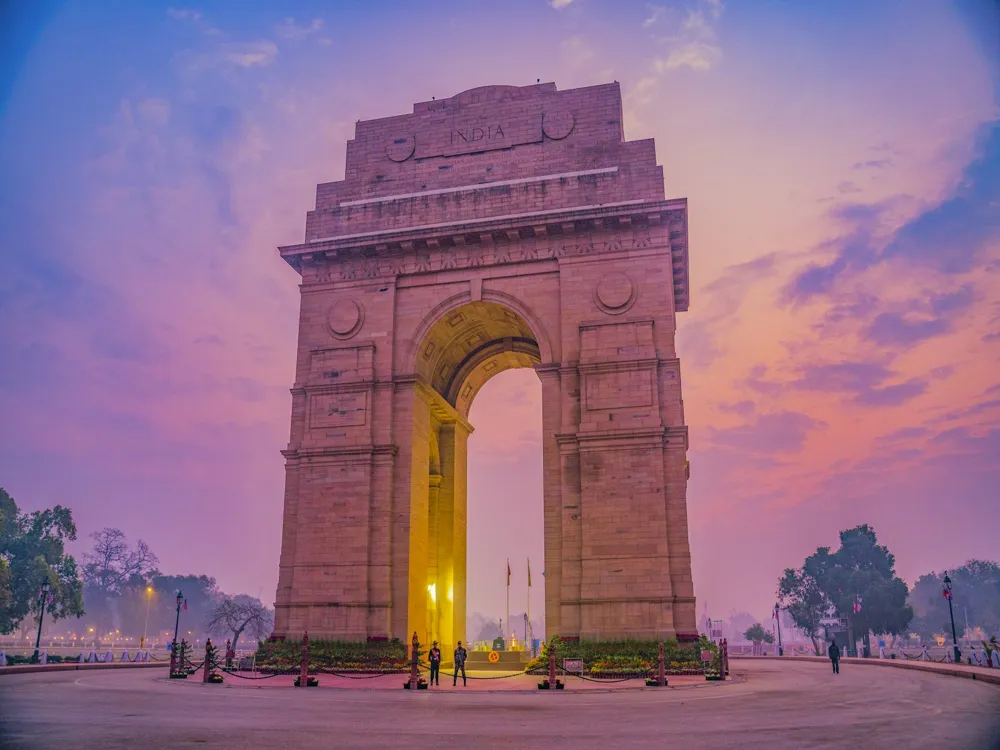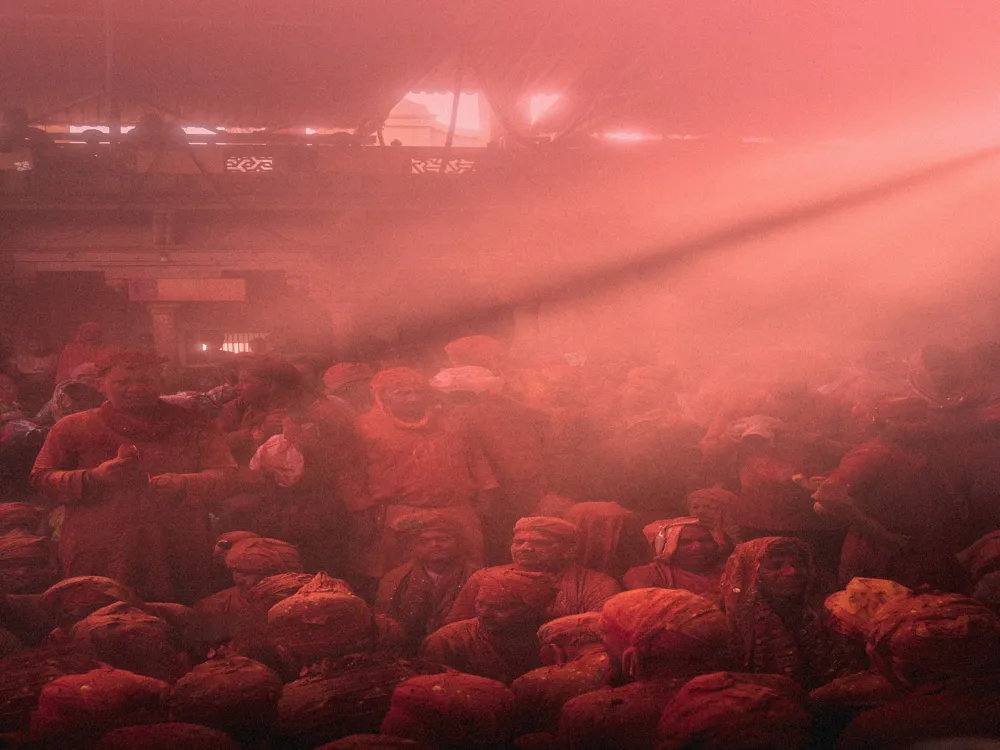Chini ka Rauza, an exquisite monument located in Agra, Uttar Pradesh, is a testament to the rich history and architectural brilliance of the Mughal period. Erected in 1635, this tomb holds the remains of Allama Afzal Khan Mullah, a scholar and minstrel who served as the Prime Minister during the reign of Shah Jahan. The name' Chini ka Rauza' translates to' Tile Tomb,' aptly describing its unique surface adorned with various penstocks, a striking point in Mughal armature. The armature of Chini ka Rauza is a remarkable mix of Persian and Indian design rudiments, embodying the cultural vision of the Mughal period. The monument's most striking point is its façade, covered in vibrant, glazed penstocks that sparkle under the sun. These penstocks, with their intricate geometric patterns and flowery motifs, showcase the Persian influence on Mughal armature. The ideal time to visit Chini ka Rauza is between October and March when the weather in Agra is pleasant. Avoid the summer months as the heat can be intense, making outdoor exploration uncomfortable. Visitors are advised to dress modestly out of respect for the cultural and historical significance of the site. Lightweight, comfortable clothing is recommended, especially during the warmer months. For photography enthusiasts, the colorful tiles of Chini ka Rauza offer a unique opportunity for stunning photographs. Early morning or late afternoon light provides the best conditions for capturing the vibrant hues of the tiles. Consider hiring a local guide to gain deeper insights into the history and architecture of Chini ka Rauza. Guides can provide fascinating details that are not readily available in guidebooks. Chini ka Rauza is easily accessible from the colorful corridor of Agra. Callers can conclude for original motorcars, bus cabs, or hacks from Agra Cantt road station, which is the nearest major road station. For those staying in central Agra, hiring a hacker or using a lift-sharing service is an accessible option. The monument is also close to other major lodestones like the Taj Mahal and Agra Fort, making it easy to include in a day's diary. Read More:Overview of Chini ka Rauza, Agra, Uttar Pradesh
This literal edifice, set on the eastern bank of the Yamuna River, is an illustration of Persian architecture's influence on Mughal structures. The use of glazed penstocks in the façade is a distinctive aspect that sets it apart from other monuments of its time. These penstocks, known as' Chini,' parade a range of colors and patterns, including flowery designs and penmanship, creating a vibrant and dynamic surface.
The layout of Chini ka Rauza is blockish, with the main tomb positioned in the center. The structure is surrounded by auditoriums , a typical point in Islamic architecture, emblematizing paradise. The pate, another characteristic element, is adorned with intricate patterns and sits atop a barrel that elevates it, giving the erecting a majestic presence. The innards of the grave, however simpler compared to its surface, still reflect the majesty of Mughal artifice with detailed stucco work and eulogies from the Quran.
Despite its literal significance, Chini ka Rauza frequently goes unnoticed among Agra's more notorious monuments. Yet, it remains an important piece of India's heritage, representing an emulsion of Persian and Indian architectural styles. Its restoration sweats have helped save its beauty, allowing callers to regard the cultural and artistic uproariousness of the Mughal period.Architecture of Chini ka Rauza
The main tomb stands on a high plinth, accessible via a flight of stairs. Its blockish base contrasts with the bulbous pate, creating a harmonious mix of shapes and forms. The pate, a classic element in Islamic armature, is intricately decorated with patterns and adjoined by four minarets, each adorned with the same various penstocks as the main structure.
Inside, the tomb is a testament to the Mughals' love for detailed art. The walls are stretched with eulogies from the Quran, executed in elegant penmanship. The stucco work, featuring intricate flowery designs and arabesques, adds depth and texture to the interior. Despite the passage of time, these details continue to allure callers with their beauty and artificer.
The girding auditoriums , in a typical Charbagh layout, further enhance the point's aesthetic appeal. This four-quadrant theater , emblematic of the Islamic conception of paradise, complements the tomb, furnishing a serene and peaceful terrain. The integration of nature with architecture is a hallmark of Mughal design, apparent in the harmonious concurrence of the structure with its natural surroundings.Tips When Visiting Chini ka Rauza
Best Time to Visit
Respectful Attire
Photography Tips
Guided Tours
How To Reach Chini ka Rauza
Chini ka Rauza
Agra
Uttar Pradesh
₹ 8,000 onwards
View agra Packages
Weather :
Tags : Forts & Palaces
Timings : 24 hours
Time Required : 1 - 2 hours
Entry Fee : No Entry Fee
Planning a Trip? Ask Your Question
Agra Travel Packages
View All Packages For Agra
Top Hotel Collections for Agra

Private Pool

Luxury Hotels

5-Star Hotels

Pet Friendly
Top Hotels Near Agra
Other Top Ranking Places In Agra
View All Places To Visit In agra
Faq on Agra
What is Chini ka Rauza in Agra?
Chini ka Rauza is a mausoleum located in Agra, India, built in the 17th century. It is known for its intricate Persian glazed tile work, hence the name "Chini" which means "Chinese" in Hindi, referring to the glazed tiles.
Who built Chini ka Rauza and when was it built?
Chini ka Rauza was built by Afzal Khan, a Persian poet and prime minister of Mughal Emperor Shah Jahan, in the early 17th century. Exact dates of construction are not certain but it is believed to have been built between 1639 and 1648.
What is the architectural style of Chini ka Rauza?
Chini ka Rauza exhibits a blend of Persian and Mughal architectural styles. It features intricate ornamentation, particularly notable for its glazed tile work, intricate carvings, and calligraphy.
What is the significance of Chini ka Rauza?
Chini ka Rauza holds historical and cultural significance as a testament to the rich architectural heritage of the Mughal era. It is also significant as the burial place of Afzal Khan, who was a prominent figure in the court of Emperor Shah Jahan.
Can visitors enter Chini ka Rauza?
Yes, Chini ka Rauza is open to visitors. Tourists can explore the mausoleum, admire its architecture, and learn about its historical significance.
View agra Packages
Weather :
Tags : Forts & Palaces
Timings : 24 hours
Time Required : 1 - 2 hours
Entry Fee : No Entry Fee
Planning a Trip? Ask Your Question
Agra Travel Packages
View All Packages For Agra
Top Hotel Collections for Agra

Private Pool

Luxury Hotels

5-Star Hotels

Pet Friendly
Top Hotels Near Agra
Other Top Ranking Places In Agra
View All Places To Visit In agraFaq on Agra
What is Chini ka Rauza in Agra?
Chini ka Rauza is a mausoleum located in Agra, India, built in the 17th century. It is known for its intricate Persian glazed tile work, hence the name "Chini" which means "Chinese" in Hindi, referring to the glazed tiles.
Who built Chini ka Rauza and when was it built?
Chini ka Rauza was built by Afzal Khan, a Persian poet and prime minister of Mughal Emperor Shah Jahan, in the early 17th century. Exact dates of construction are not certain but it is believed to have been built between 1639 and 1648.
What is the architectural style of Chini ka Rauza?
Chini ka Rauza exhibits a blend of Persian and Mughal architectural styles. It features intricate ornamentation, particularly notable for its glazed tile work, intricate carvings, and calligraphy.
What is the significance of Chini ka Rauza?
Chini ka Rauza holds historical and cultural significance as a testament to the rich architectural heritage of the Mughal era. It is also significant as the burial place of Afzal Khan, who was a prominent figure in the court of Emperor Shah Jahan.
Can visitors enter Chini ka Rauza?
Yes, Chini ka Rauza is open to visitors. Tourists can explore the mausoleum, admire its architecture, and learn about its historical significance.







